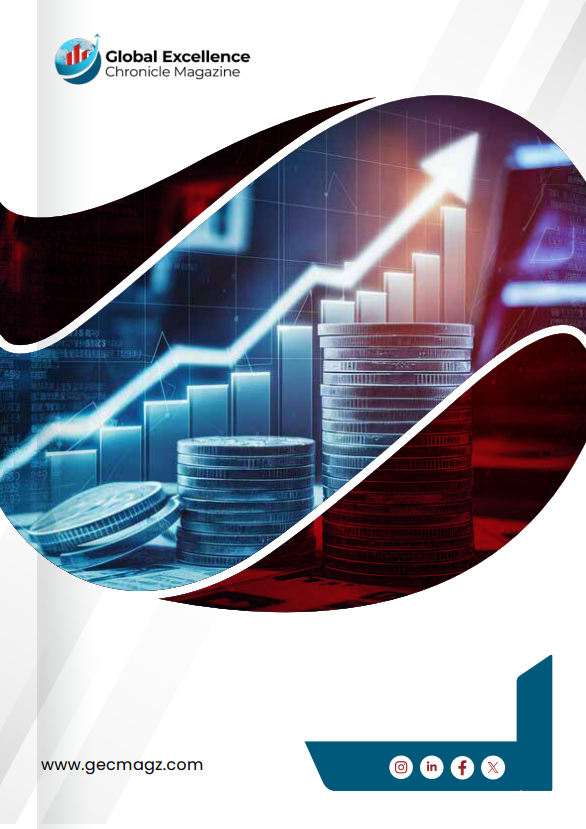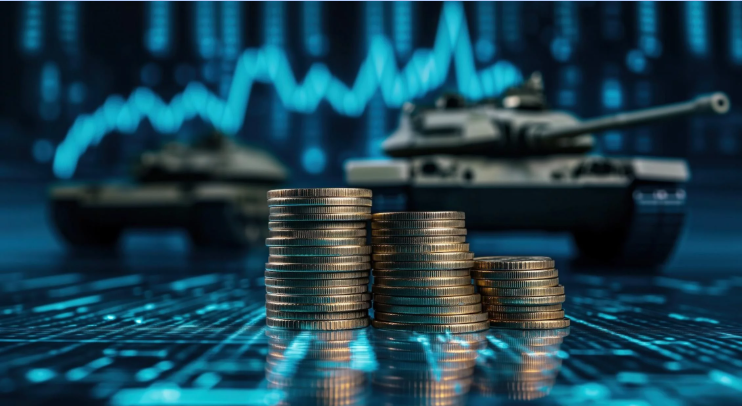Russia’s full-scale invasion of Ukraine in 2022 marked an end to stability in Europe and beyond and fundamentally altered the global order, thus unleashing a wave of political, economic, and military realignments (e.g. Acemoglu and Johnson 2023, Beetsma et al. 2024, Burilkov and Wolff 2025). The awakening to the full-scale war radically altered these beliefs as the war-related shocks impacted the world and especially Europe, which has been particularly exposed to Russian threats and blackmail. The ongoing nature of the war makes it difficult to comprehend its full ramifications, but the immediately observed consequences demand a comprehensive analysis and at least provisional estimates.
To this end, in Gorodnichenko and Vasudevan (2025) we examine how professional forecasters revise their macroeconomic expectations in response to the outbreak and evolution of the war. In doing so, we address the following key questions: What are the short- and long-term economic effects for Ukraine and Russia, and to what degree are neighbouring nations impacted by spillover effects? What is the cost of the war?
Our analysis uses forecasts collected by Consensus Economics covering 29 countries across Eastern Europe, Caucasus, and Central Asia. The high frequency and long time series of the dataset allow us to compare and contextualise the shift in macroeconomic expectations after Russia’s 2022 invasion with its 2014 illegal annexation of Crimea and partial occupation of the Donbas as well as other major events, such as the 2008-2009 Global Crisis and the COVID-19 pandemic. By using real-time macroeconomic forecasts rather than actual data, we of course provide only estimates, which may be revised significantly later. On the other hand, realised data are ‘rear-view-mirror information’ that becomes available with long delays, while forecasts permit real-time analysis thus making it more appealing for policymaking.
Approach
A long tradition in macroeconomics uses high-frequency analysis to credibly identify and precisely estimate effects of shocks on various outcomes. While macroeconomic forecasts are often not released at frequencies high enough to rule out potentially confounding shocks, the Russian invasion of Ukraine in 2022 is likely as close as one can get to it. First, Consensus Economics releases long-term forecasts quarterly (January, April, July, and October), so we compare forecasts made just before the invasion (January 2022) with those made shortly after (April 2022), when more information on the scale of the shock and the character of the war had emerged. Second, long-term forecasts in Consensus Economics provide ten-year-ahead paths of macroeconomic variables. As a result, one can compute the difference in the paths across forecast vintages and interpret this difference as an impulse response: The invasion is the impulse, the difference between forecast trajectories measures the response. Third, Consensus Economics collects long-term forecasts for a number of variables, which allows us to paint a more complete picture of how the war shock propagates in the economy. Using these unique features, we compare the pre- and post-invasion projections and report the cumulative difference to assess the impact of the invasion.
Results
As shown in Figure 1, professional forecasters predicted that the war would be highly stagflationary for Ukraine and Russia. Each country was projected to permanently lose a large share of GDP (at least ~15% per year below the pre-war projection) and to experience at least 25% cumulative increase in the price level. Because the war was largely expected to be on the Ukrainian territory, the big decrease in output for Russia likely reflects the effects of sanctions and isolation. Note that private demand was predicted to fall more in Russia than in Ukraine, thus suggesting that professional forecasters anticipated a big, crowding out increase in military spending in Russia and a big aid flow for Ukraine. In terms of external trade balances, Ukraine was projected to run a somewhat larger current account deficit that would reverse after three years. In contrast, Russia was projected to have a much larger and rising current account surplus, which likely reflected a dramatic increase in energy prices after the invasion.
Figure 1 Event (Russia’s full-scale invasion of Ukraine, 2022) response: Consensus forecasts


The rest of Eastern Europe was expected to experience similar, but smaller effects from the invasion. For example, the average cumulative increase in the level of prices was approximately 7% while the average (across countries) cumulative decrease of output was projected at 10.8%. Both investment and consumption were expected to fall and current account deficits to widen (recall that most countries in Eastern Europe are net importers of energy). Thus, projected spillovers from the war into Eastern Europe were modest but not negligible.
The cost of war
To quantify the cost of the invasion, we construct a forward-looking estimate using GDP growth forecasts from January 2022 (pre-invasion) and April 2022 (post-invasion), with the main shock between the dates being the Russian invasion. We use the differences in professional forecasts over zero- to five-year-ahead horizons, which correspond to years 2022-2027. The difference in expectations is then multiplied by the corresponding country’s GDP in 2021 from IMF’s IFS. This product gives an estimated GDP loss for 2022-2027.
Our results (Figure 2) reveal staggering economic losses for countries directly and indirectly affected by the invasion, with the combined total cost of war for all 29 countries equating to $2.44 trillion and a loss of 44.95% relative to their GDP in 2021. Ukraine was projected to suffer the most severe relative loss with an estimated 193% loss of GDP (a total cost of $386 billion over six years). Russia has the greatest absolute cost of $1.69 trillion (a loss of 92.4% of GDP over six years). Countries such as Poland, Romania, and the Czech Republic experienced long-term losses stemming from geopolitical spillovers. Within Caucasus and Central Asia, countries like Armenia, Georgia, Moldova, and Kazakhstan were expected to experience a loss between 10-33% attributed to losses in trade. Belarus was projected to lose $32.1 billion (-47.1%), which is likely attributed to its alliance with Russia and subsequent subjection to Western sanctions. Within the Baltic States, Estonia, Latvia, and Lithuania were expected to lose between 8-20% of GDP, likely due to their prior energy dependence on Russia. It is worth noting that Azerbaijan, an alternative source of energy, was forecast to have an increase of 1.81% of its GDP ($994.6 million). Thus, despite Russia and Ukraine bearing a significant portion of the total damages, nearly all the 29 countries were expected to suffer from the war.
Figure 2 Cost of Russian aggression, projections as of April 2022


Notes: The figure reports estimates of the cost of Russia’s 2022 full-scale invasion. The cost is measured in both percent of GDP before the corresponding round of aggression and in absolute terms. The countries are ranked in descending order with their respective costs displayed alongside.
We find countries closer to the conflict have larger negative revisions in outlook than more distant countries. At the same time, we show that projected macroeconomic trends for Russia and Ukraine diverge from those for other countries and hence there is a sign of the region economically decoupling from the belligerents. We also show that, according to professional forecasters, the war is likely to result in a negative hysteresis effect (i.e. a persistent slowdown of economic growth, see Gorodnichenko et al. 2024) for Russia but limited hysteresis effects for Ukraine (likely due to rapid post-war reconstruction, see Becker et al. 2024) and Eastern Europe.
With the benefit of hindsight, we can assess how accurate these projections for the cost of the war were. For example, World Bank et al. (2025) estimated that Ukraine’s losses in 2022-2024 stood at $524 billion as of 31 December 2024. The first (February 2022-June 2022) damage assessment by the World Bank et al. (2022) estimated the cost at $349 billion as of 1 June 2022. This means that between June 2022 and December 2024, Ukraine suffered about $175 billion in additional damages (roughly equal to Ukraine’s GDP in 2021). Therefore, while a large chunk of damage occurred in the early months of the war, the cost of war kept climbing as the war continued. Alternatively, various estimates (e.g. Jones and McCabe 2025) suggest that as of June 2025 the war casualties for Russia and Ukraine are close to 1.5 million people. Using $1 million as a conservative estimate for the value of life (Masterman and Viscusi 2018), one arrives at a cost of $1.5 trillion. In a similar spirit, we find that professional forecasters got it qualitatively right that Russian aggression in 2014 would be costly, but their projections understated the losses.
Concluding remarks
There are few estimates of how costly Russian belligerence is. While the full extent of the toll will be revealed only after Russian aggression is defeated (e.g. Federle et al. 2024), there is an acute need to have at least tentative estimates to inform policy, minimise damages, and lay groundwork for recovery. To address this gap, we use a database of macroeconomic forecasts to quantify the predicted effect of the war on output, inflation, and other aggregates for Ukraine and Russia as well as countries in Eastern Europe, Caucasus, and Central Asia.
Professional forecasters suggested a staggering $2.4 trillion cost of Russia’s full-scale invasion of Ukraine not only for belligerent countries but also for their neighbours in the region. However, we argue that even this amount understates the full scale of economic harm. Professional forecasters predicted the war to weigh heavily on the region, far beyond the immediate war zone but with the strongest effects on countries close to the war. Additionally, these shocks are expected to have long-lasting negative effects, imposing an anchoring drag on the region’s economic trajectory, particularly for Russia.
Ultimately, our findings show that the immense and enduring economic repercussions of Russian aggression demand a robust international response.
Source: cepr.org



